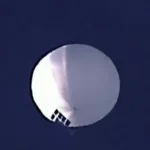Despite Jeff Bezos’ promises of drone delivery nearly a decade ago, they’ve been slow to catch on. A little more than a month after Amazon Prime Air began serving California and Texas, it had served fewer than ten households – and it’s already laid off more than half the employees at those locations.
Related
- Amazon’s started to deliver orders by drones in California and Texas
That’s according to a pair of new reports at The Information and Business Insider, and Amazon isn’t denying it. Amazon spokesperson Maria Boschetti didn’t contest those numbers in an email to The Verge when we asked.
But she also said that Prime Air is actually working to expand drone deliveries in both California and Texas, with the FAA’s approval.
It might be because Amazon’s drone isn’t allowed to fly over roads by itself that it doesn’t have many customers for drone deliveries quite yet.
Keeping with FAA regulations, Amazon employees had to act as spotters to ensure there were no vehicles coming when the drone needed to cross the street, a plan approved by the agency.
Seems silly, doesn’t it? For Amazon’s drone, crossing the street requires holding hands like a five-year-old. A drone designed to replace humans needs humans to go places.

Amazon is working through a slow process with the FAA
Until last November, Amazon couldn’t even fly its drones outside of “sparsely populated areas,” couldn’t fly over buildings or within 100 feet of a building, and had to stick to flying over property under Amazon’s total control. The FAA required Amazon’s drone pilots to have the kind of private pilot license that’d let you fly a plane, not just a drone. If I’m reading correctly, every flight needed as many as six human beings, including observers and ground station operators.
That seems to have been wise. There were five crashes in four months at Amazon’s testing facilities in Oregon, and one crash ignited a 25-acre brush fire. The drone weighs nearly 90 pounds.
But those rules were during the experimental stage, and Amazon successfully argued last November that its experience and its new, safer and more autonomous MK27-2 drone didn’t need as many humans or safeguards. Among other things, the FAA cited its “enhanced perception system that allows for detection of people or obstacles below the UA during delivery or landing,” its auto-abort feature, remote alerts, and the fact that it can fly even if one of its six motors fails as reasons to nix those specific restrictions and more.
Here are just some of the ground rules that still exist:

i. Operations over people are prohibited, unless otherwise approved by the Administrator;
ii. Overflight of power plants is prohibited;
iii. Overflight of schools during times of operation (e.g., elementary, middle, high, preschool and daycare facilities) is prohibited;
iv. Operations over or within 250 ft. laterally of moving vehicles are prohibited, unless otherwise approved by the Administrator
v. Overflight of any area deemed high risk by the Operator during the flight route design process are prohibited;
vi. Sustained flight within 250 ft. laterally of roadways is prohibited, and transitions over roadways is prohibited, unless otherwise approved by the Administrator;
vii. The UA must remain at least 100 ft. laterally from any person during all phases of flight, unless otherwise approved by the Administrator.
You’ll notice that Amazon’s drone still can’t cross a road by itself, and can’t come near or fly over people. That means Amazon’s customers can’t stand in their own backyards when the package gets dropped — unless their backyards are bigger than my house — and the FAA states that Amazon has to explicitly warn customers about that when they sign up.
With such restrictive laws governing drone movements, delivery companies have limited flexibility. At the same time, it is important to monitor the activities since the drones are capable of a lot more dangers man can think of. What are your thoughts? Let us know down in the comments below.





